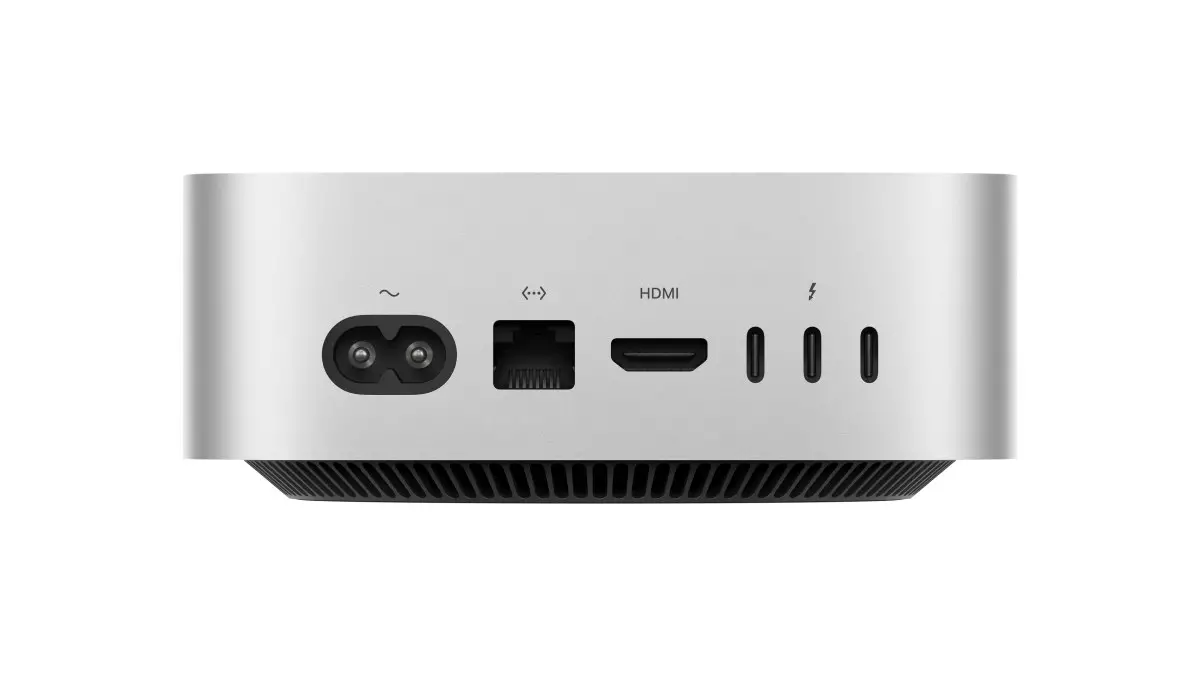In an exciting development for Apple enthusiasts, Apple has unveiled its latest powerhouse in chip technology: the M4 silicon. This cutting-edge addition marks a significant upgrade to the recently introduced Mac Mini, a palm-sized marvel that promises enhanced performance for both everyday users and creative professionals alike. The M4 chip rolls out following its predecessor’s unconventional debut in the iPad Pro, breaking the traditional Apple Silicon release pattern. With the M4, Apple continues to solidify its reputation as a leader in computing innovation.
One of the standout features of the M4 is its support for Thunderbolt 5, a technology that dramatically enhances connectivity by increasing data transfer speeds from 120 GB/s to a staggering 273 GB/s. This leap forward allows users to connect multiple peripherals with significant speed and efficiency. The M4 Pro variant is equipped with an impressive five Thunderbolt 5 ports, while the base M4 model retains the previous Thunderbolt 4 standard. This orientation towards advanced connectivity underscores Apple’s commitment to ensuring that its devices can handle the most demanding modern applications.
The architecture of the M4 Pro is a feat of engineering, featuring a second-generation 3-nanometer process that enhances both performance and energy efficiency. The chip boasts a CPU configuration that reaches up to 14 cores—10 dedicated to performance and four tailored for efficiency—ensuring that even the most resource-intensive tasks are handled with ease. On the graphical side, the GPU can achieve a maximum of 20 cores, complemented by a Neural Engine with 16 cores, indicating that Apple has prioritized both processing power and machine learning capabilities in this generation of silicon.
Apple asserts that the M4 chip excels in single-threaded performance, which is crucial for tasks that require quick processing speeds. Moreover, the GPU’s performance is particularly impressive, doubling the capabilities of the system’s ray-tracing engine, signaling Apple’s intent to establish the Mac as a serious contender in the gaming segment. As gaming graphics become increasingly demanding, the architectural advances afforded by the M4 and M4 Pro are set to enhance the overall user experience for gamers and professionals alike.
As with most high-end technology, the M4 Pro comes at a premium price point. The new Mac Mini featuring the M4 chip starts at a competitive $599, making it appealing for entry-level users. However, the Pro upgrade significantly elevates the cost to $1,399, catering to the more serious professionals who require advanced performance for complex tasks. Preorders for both models will commence on Tuesday, with shipping scheduled for November 8, allowing eager customers to get their hands on the latest from Apple shortly thereafter.
Overall, the introduction of the M4 silicon signifies a major advancement in Apple’s ecosystem, offering a tantalizing glimpse into the future of computing. With impressive performance metrics, enhanced connectivity options, and a keen focus on gaming, the M4 and M4 Pro chips are poised to redefine how users interact with their Mac devices. As Apple continues to push boundaries in technology, users can look forward to unprecedented performance and capabilities that keep pace with their evolving needs.

